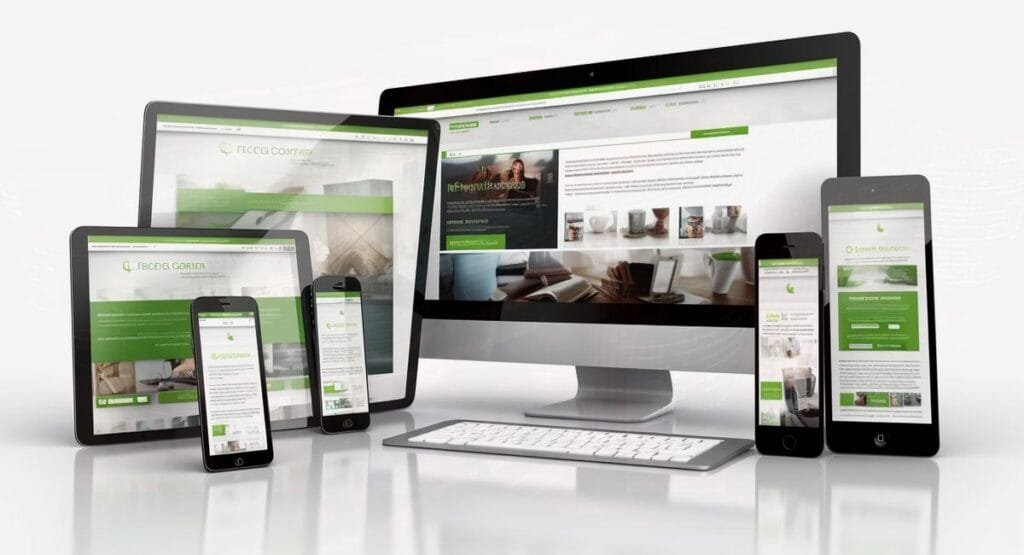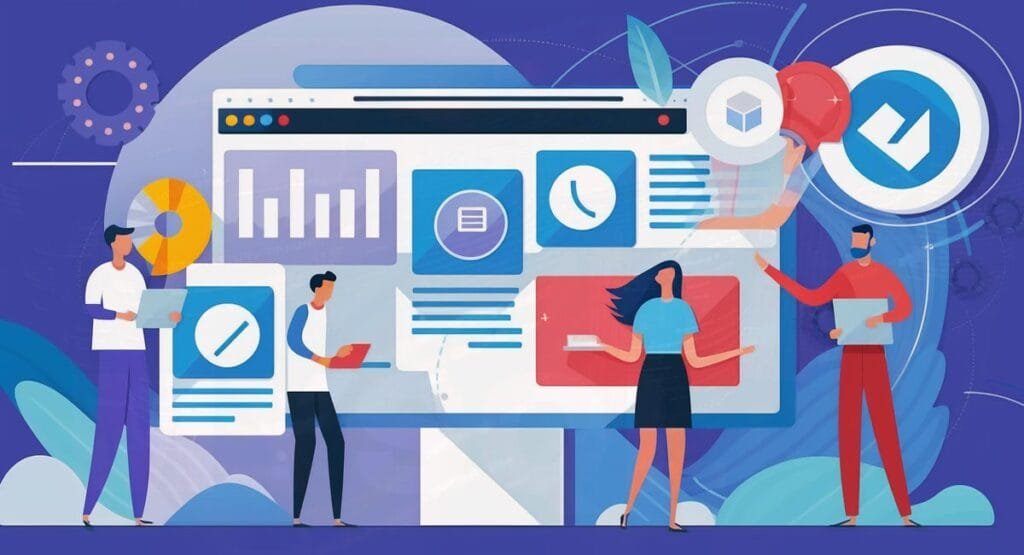Web designing and development is a pivotal aspect of the digital world that shapes how we interact with the internet. This comprehensive guide will introduce you to the fundamental concepts of web designing and development, detailing how these fields contribute to the online presence of businesses and brands worldwide.
Introduction
Web designing and development may seem like interchangeable terms to those unfamiliar with the IT industry, but they refer to two distinct disciplines that work hand-in-hand to deliver an impactful and functional web experience.
Web design focuses on the aesthetic aspects of a website and user experience, while web development transforms the design into a fully functional website. This article will take a deep dive into these two areas, shedding light on the methodologies, tools, and best practices that make a website successful. By the end of this guide, you will gain insights into:
- What web designing and development are and why they matter
- The key differences between web design and development
- Essential tools and technologies used in web design and development
- The process and stages of web design and development
- The role of web design and development in digital marketing
Web designing and development are powerful tools for businesses to establish their digital presence, deliver value to their customers, and drive growth. This guide aims to provide you with a solid foundation of understanding and inspire you to further explore this exciting domain.
What is Web Design?
Web design encompasses various skills and disciplines used in the creation and maintenance of websites. It’s the process of planning, conceptualizing, and arranging content intended for the internet. Modern web design goes beyond how things look (aesthetics) to include how things work (functionality). Web design is not merely concerned with making websites look nice, but also with ensuring they are user-friendly, accessible, and align with your brand’s image.
Web Design Elements
Web design integrates a wide range of elements to create an engaging and effective user experience. Some of these critical elements include:
- Layout: The arrangement of graphics, ads, and text. In web design, the goal is to maintain balance, consistency, and integrity of the design.
- Color: Depending on the purpose, this could range from a simple black-and-white design to a multicolored design, representing a brand’s personality or a specific group of users.
- Graphics: These include logos, icons, photos, and other design elements that enhance the web design. They should be appropriately placed, working with the color and content of the page, and not making it congested or slow to load.
- Typography: The types of fonts used can significantly impact a website’s aesthetic. Web designers should select fonts that are easy to read across different devices and browsers.
- Content: Relevant, quality content can work with design to enhance a website’s visibility to search engines and resonate with visitors.
What is Web Development?
Web development refers to the coding or programming that enables website functionality, per the owner’s requirements. While web design is about the look and feel of a site, web development makes the design functional. It’s the construction and maintenance of websites; it’s the work that happens behind the scenes to make a website look great, work fast, and perform well with a seamless user experience. Web development can be broken down into two broad categories: front-end (or client-side) development and back-end (or server-side) development.
Front-End Development
Front-end development involves converting web design files into raw HTML, JavaScript (JS), and CSS (Cascading Style Sheets) code. Front-end developers are responsible for everything that you see, click, or use to input or retrieve information on a website. They are focused on design layout, user interface, and user experience.
Back-End Development
Back-end developers are responsible for the server-side of a website, which includes servers, databases, and applications. They work on what goes on behind the scenes, like databases and servers. Back-end developers usually write web services and APIs used by front-end developers and mobile application developers.
Full-Stack Development
A full-stack developer handles both front-end and back-end development tasks. They work on projects that require databases, build user-facing websites, or even work with clients during the planning phase of projects.
Essential Tools and Technologies Used in Web Design and Development
The world of web design and development is continually evolving, with new tools and technologies being introduced regularly. Here are some of the essential tools and technologies that professionals in this field use:
Web Design Tools
- Adobe Photoshop and Illustrator: These Adobe Suite programs are commonly used for creating and editing graphics and images.
- Sketch: A vector-based design tool with a focus on screen design, utilized for creating UI and UX.
- Figma: A browser-based interface design tool that allows real-time collaboration.
- Canva: An online design and publishing tool with a drag-and-drop interface.
Web Development Tools and Technologies
- HTML/CSS/JavaScript: These are the building blocks of web development. HTML is used for creating web pages, CSS is used for styling and layout, and JavaScript is used for interactive elements.
- Bootstrap: A free and open-source CSS framework directed at responsive, mobile-first front-end web development.
- jQuery: A fast, small, and feature-rich JavaScript library.
- React.js/Angular.js: Popular JavaScript libraries and frameworks for building user interfaces.
- Node.js: A runtime environment that allows the execution of JavaScript code server-side.
- Python, Ruby, PHP: Programming languages used in server-side development.
The Process and Stages of Web Design and Development
The web design and development process is a structured sequence of stages that ensures all necessary elements are considered. Here’s a typical process:
- Information Gathering: This stage involves understanding the company’s goals, target audience, and the content to be included.
- Planning: A site map is created to outline the main areas and sub-areas of the site. The technologies to be used are also decided at this stage.
- Design: Based on the information gathered so far, the site’s look and feel are designed. Logo, color schemes, images, and functionalities are all put into consideration.
- Development: The site is first developed on a home page, followed by a “shell” for the interior pages. The shell serves as a template for the content pages of the site.
- Testing and Delivery: The website is tested to be sure it is optimized to be viewed properly in the most recent browser versions. Once approved, the website is uploaded to a server and goes live.
- Maintenance: Post-deployment, the site needs to be continually updated to stay current and relevant.
Role of Web Design and Development in Digital Marketing
Web design and development play a crucial role in digital marketing. A well-designed and developed website is pivotal in any digital marketing strategy[^28^]. It’s a powerful means of communication, a credibility-booster, and a conversion tool.
Search Engine Optimization (SEO)
A well-developed website is essential for effective SEO strategy. Web design and development practices like using relevant keywords in your website content, optimizing page load speed, making a website mobile-friendly, and implementing structured data can make your website more appealing to search engines\.
- Conversion Rate Optimization (CRO): Effective web design can help improve conversion rates by making it easy for visitors to navigate through your website, find the information they’re looking for, and ultimately complete a desired action (like making a purchase, signing up for a newsletter, etc.)
- Branding and Credibility: A professionally designed and developed website helps boost a brand’s online presence, enhances its credibility, and creates a positive impression that encourages visitors to engage more with the brand.
- User Experience (UX): A well-designed and developed website provides a positive user experience, which can lead to increased customer satisfaction and loyalty.
- Mobile Marketing: Responsive web design, a practice in web development, ensures that websites look and function well on various devices, including smartphones and tablets. This is crucial in today’s mobile-centric world.
Conclusion
Web designing and development are intertwined disciplines that shape our digital world. Through them, ideas become visible, and companies connect with their audiences on a personal level. As businesses continue to prioritize their digital presence, the importance of understanding and applying web design and development principles becomes more and more evident.
Web design, with its focus on aesthetics and user experience, combined with web development, which brings designs to life, together create functional, appealing websites that play a crucial role in digital marketing strategies. As these fields continue to evolve, staying informed about the latest tools, technologies, and best practices will be paramount for businesses seeking to leverage the power of the web.
Sources
- The Role of Your Website in SEO & How to Optimize for Search | HubSpot
- Conversion Rate Optimization (CRO): Best Practices | BigCommerce
- How Good Web Design Can Boost Your Reputation | Forbes
- The Impact of Good Web Design Techniques on User Experience | UX Design
- The Importance of Mobile-Responsive Web Design | Forbes
I write for and assist as the editor-in-chief for 601MEDIA Solutions. I’m a digital entrepreneur since 1992. Articles may include AI assisted research. Always Keep Learning! Notice: All content is published for educational and entertainment purposes only. NOT LIFE, HEALTH, SURVIVAL, FINANCIAL, BUSINESS, LEGAL OR ANY OTHER ADVICE. Learn more about Mark Mayo




